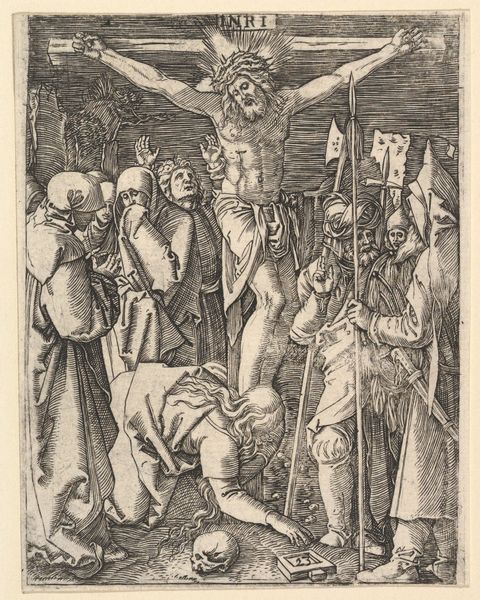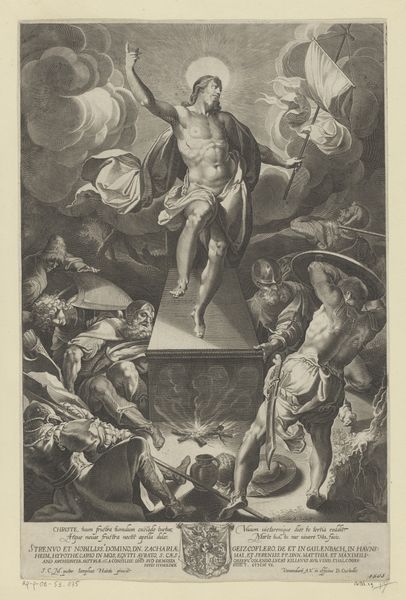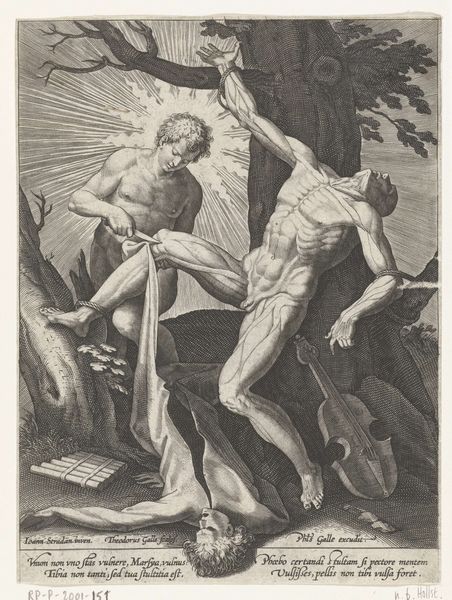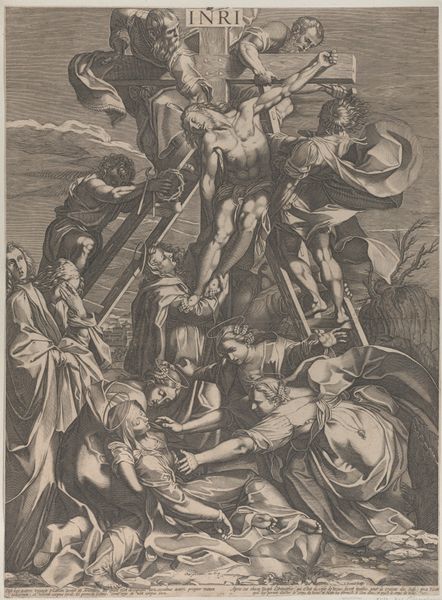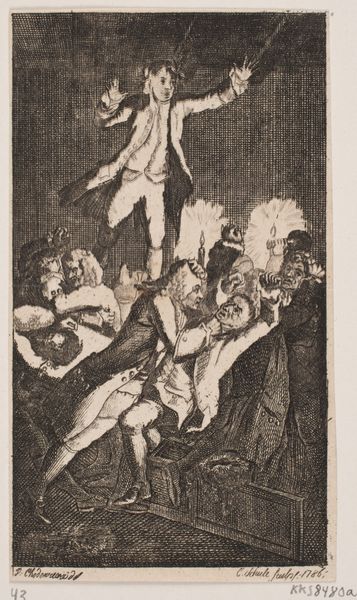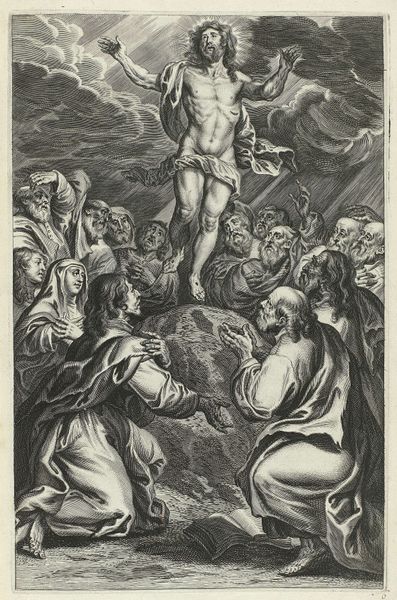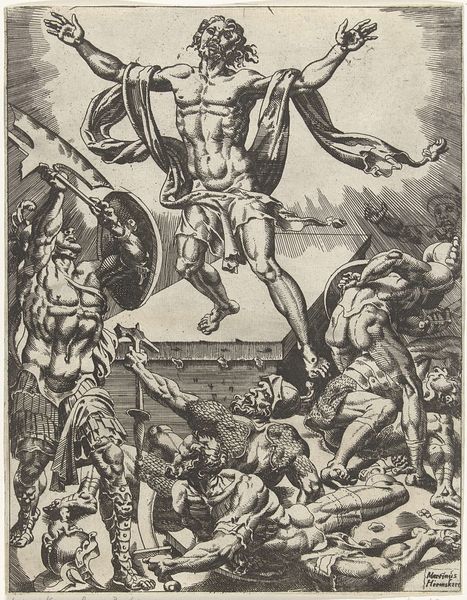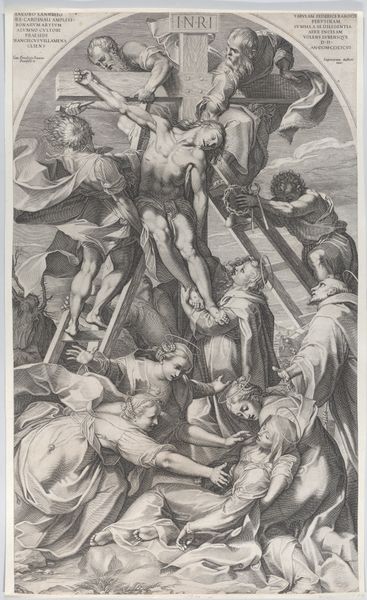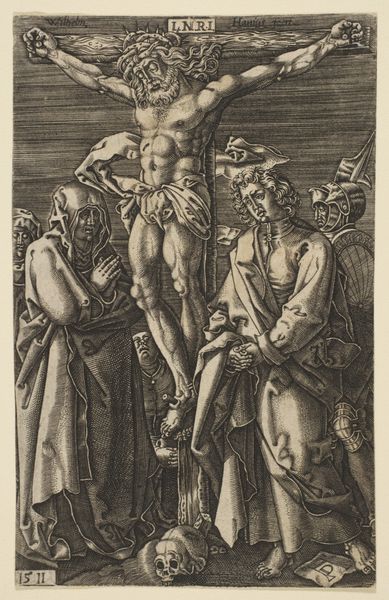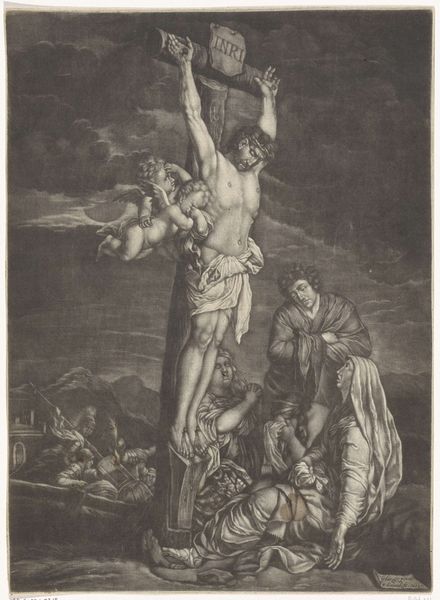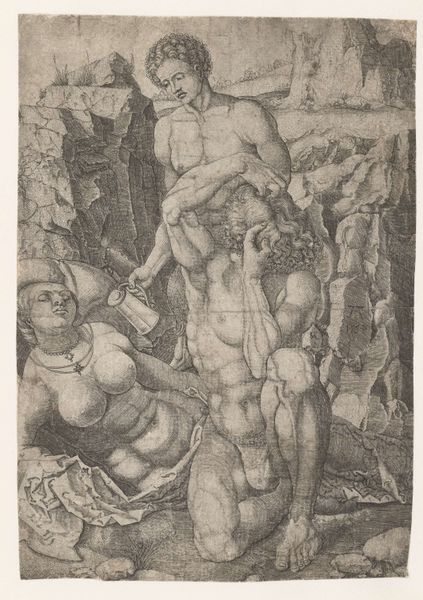
print, engraving
#
baroque
# print
#
old engraving style
#
figuration
#
history-painting
#
engraving
Dimensions: height 181 mm, width 127 mm
Copyright: Rijks Museum: Open Domain
Curator: The raw emotion of this piece really strikes me. Look at "Crucifixion of Christ" a print created sometime between 1590 and 1632 by Pieter de Jode I. The composition, the suffering depicted… it's all so intense. Editor: Yes, it is viscerally affecting. Considering its historical context, the use of engraving enhances the drama, don’t you think? Its visual language relies on established notions of pathos from both artistic and religious history. Curator: Absolutely, the Baroque style is undeniable here – the dramatic lighting, the dynamic composition – everything serves to amplify the emotional impact on the viewer. But beyond the immediate emotion, I'm drawn to the iconography, the arrangement, how these symbols play out across cultures over time. Editor: True, we see familiar figures, rendered through the lens of Baroque aesthetics and amplified by counter-reformation sensibilities: but how would a viewer at the time, perhaps involved in the socio-political conflicts of the age, have perceived this work? How did that influence de Jode’s practice? Curator: A piece like this works as a nexus of ideas. It’s more than a visual representation. For believers then, but even to the secular eye today, that central figure symbolizes sacrifice, suffering, and redemption—universal themes expressed through very specific cultural symbols. Editor: Exactly, and the image is not just for religious devotion, or solely an exploration of de Jode's creativity and skill. These kinds of widely disseminated prints actively constructed religious and political identities, bolstering specific positions. It's not neutral, even in its assumed piety. Curator: So it holds within it multiple layers of meaning – theological, yes, but also deeply embedded within the social and political context of its creation and reception. Editor: Indeed. Looking at the image now, I am more keenly aware of the silent but powerful roles images play in structuring our understandings of the world. Curator: And I’m left wondering about the lasting power of archetypes, how certain stories and symbols continue to resonate.
Comments
No comments
Be the first to comment and join the conversation on the ultimate creative platform.

